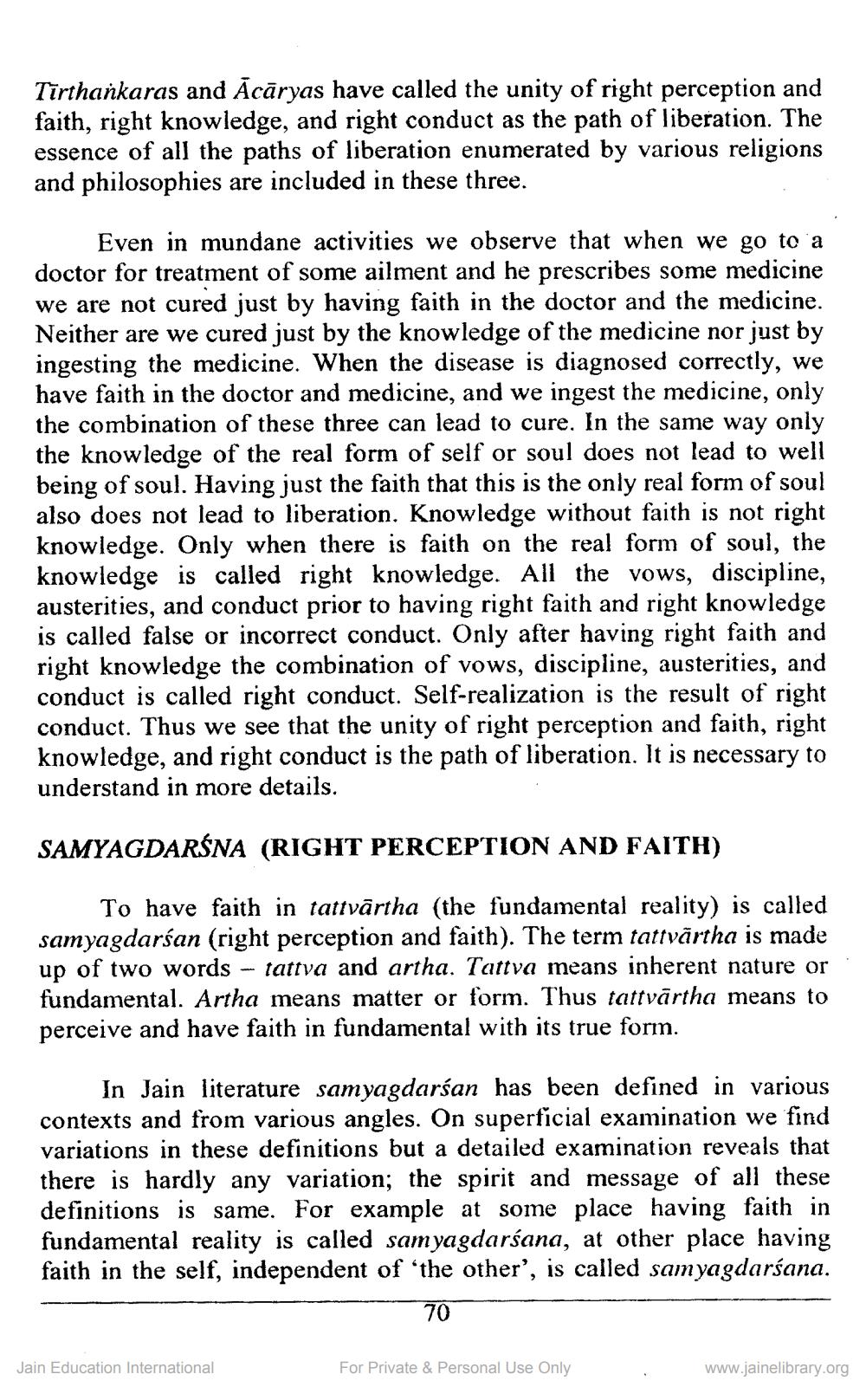________________
Tīrthankaras and Ācāryas have called the unity of right perception and faith, right knowledge, and right conduct as the path of liberation. The essence of all the paths of liberation enumerated by various religions and philosophies are included in these three.
Even in mundane activities we observe that when we go to a doctor for treatment of some ailment and he prescribes some medicine we are not cured just by having faith in the doctor and the medicine. Neither are we cured just by the knowledge of the medicine nor just by ingesting the medicine. When the disease is diagnosed correctly, we have faith in the doctor and medicine, and we ingest the medicine, only the combination of these three can lead to cure. In the same way only the knowledge of the real form of self or soul does not lead to well being of soul. Having just the faith that this is the only real form of soul also does not lead to liberation. Knowledge without faith is not right knowledge. Only when there is faith on the real form of soul, the knowledge is called right knowledge. All the vows, discipline, austerities, and conduct prior to having right faith and right knowledge is called false or incorrect conduct. Only after having right faith and right knowledge the combination of vows, discipline, austerities, and conduct is called right conduct. Self-realization is the result of right conduct. Thus we see that the unity of right perception and faith, right knowledge, and right conduct is the path of liberation. It is necessary to understand in more details.
SAMYAGDARŚNA (RIGHT PERCEPTION AND FAITH)
To have faith in tattvārtha (the fundamental reality) is called samyagdarśan (right perception and faith). The term tattvārtha is made up of two words - tattva and artha. Tattva means inherent nature or fundamental. Artha means matter or form. Thus tattvārtha means to perceive and have faith in fundamental with its true form.
In Jain literature samyagdarśan has been defined in various contexts and from various angles. On superficial examination we find variations in these definitions but a detailed examination reveals that there is hardly any variation; the spirit and message of all these definitions is same. For example at some place having faith in fundamental reality is called samyagdarśana, at other place having faith in the self, independent of 'the other', is called samyagdarśana.
70
Jain Education International
For Private & Personal Use Only
www.jainelibrary.org




